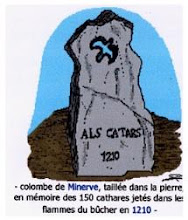by David Ross
6 April 2008
Introduction.
Earlier I had proposed that the Papyrus Oxyrhynchus 840 should be associated with the fragments of the Traditions of Matthias which Clement of Alexandria quoted.
I propose here that more Traditions be added to this corpus; which have here been adduced, more favourably, by the heretical document "Testimony of Truth".
The Traditions of the Testimony of Truth.
Not all Christian heresiologies argued for orthodox Catholicism. Among the non-Catholic heresiologies was the Testimony of Truth, which came to be translated into Coptic in the ninth Nag Hammadi codex.
The Testimony of Truth cites a number of Jesus traditions, e.g. that Jewish law belongs to "the Pharisees and the scribes of the Law", that followers of the Law "will not be able to serve two masters", and that Jesus walked on water. Not all these traditions are of the orthodox canon: e.g. that Mary remained virginal even after giving birth, a tale which derives from the Protevangelium of James.
Some traditions which the Testimony cites, and comments upon, do not appear in any known text. One such refers to the baptism of Jesus by John:
But the Son of Man came forth from Imperishability, being alien to defilement. He came to the world by the Jordan river, and immediately the Jordan turned back. And John bore witness to the descent of Jesus. For it is he who saw the power which came down upon the Jordan river; for he knew that the dominion of carnal procreation had come to an end. The Jordan river is the power of the body, that is, the senses of pleasures. The water of the Jordan is the desire for sexual intercourse. John is the archon of the womb.
The Attitude of the Testimony of Truth.
The Testimony does not approve of sexual intercourse. It cites the Protevangelium precisely because it absolves Mary of this sin.
Likewise, it does not approve of the "baptism of death". It prefers a "baptism of truth" which is a mental "renunciation of the world". Those of its traditions which bring Jesus close to water consistently portray the former as magnetically repellent to the latter.
The Testimony also goes further than the NT in associating the Law of "the Pharisees and the scribes" with defilement.
The Sources of the Testimony of Truth.
Beyond the canon and classic apocrypha, the Testimony is likely referring to other sources now lost. Such traditions as the reversal of the Jordan would be dependent on canon stories like those of John's baptism, and would bear an aversion to water and to Jewish law.
We have such a document in Papyrus Oxyrhynchus 840; which is an expansion of (mostly) Matthew, opposed to (a strawman of) Jewish law, bearing a strong sense of encratism and a denial of water purification in particular.
The quoted adage "one cannot serve two masters" in the canon referred to Mammon and the Lord. By saying "But he who is father of Mammon is (also) father of sexual intercourse", the Testimony is also close to the quoted Traditions of Matthias: "one cannot serve both pleasure and Lord".
Conclusion.
I would associate the Traditions of Matthias with Papyrus Oxyrhynchus 840, and also both with the hydrophobic traditions behind the Testimony of Truth.
As Marcion had reedited Luke's Gospel as the truer Gospel for his church, it is even possible that the author of the Testimony (whom many scholars believe is Cassian) forged the Gospel of Matthias as the truer Gospel of Matthew.
Any thoughts? e-mail me :^)
zimriel@sbcglobal.netOther Links
- Testimony of Truth - From the indispensible Nag Hammadi site.
- Andrew Bernhard's translation of Pap. Oxy 840, recently moved here
- The Traditions of Matthias by Peter Kirby.
- The Oxyrhynchus 840 Gospel by Peter Kirby.
- Gospel of Matthias, by me, a long long time ago in an apartment far away.
- Back to The House of Zimri
Miscellany
The first version of this project was written 5-6 April 2008.









No comments:
Post a Comment